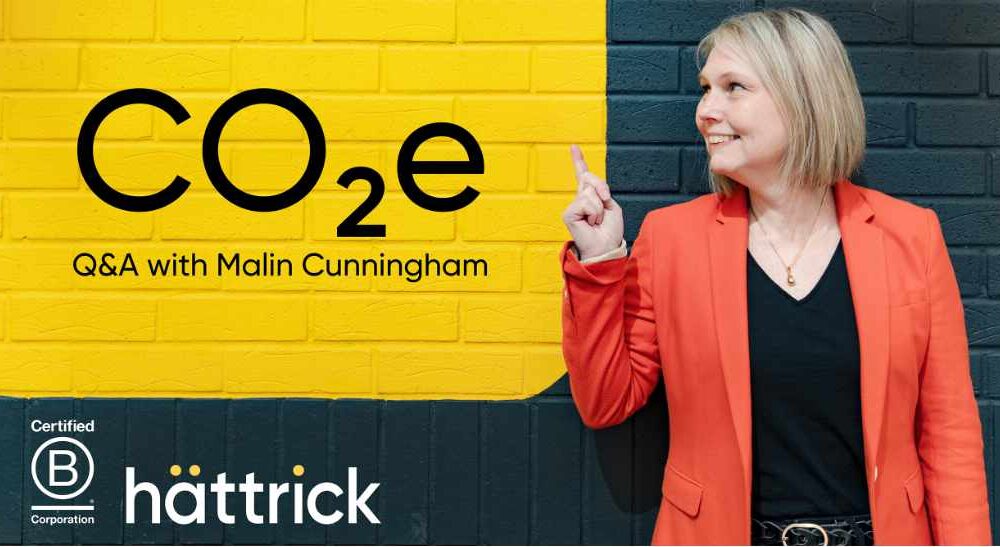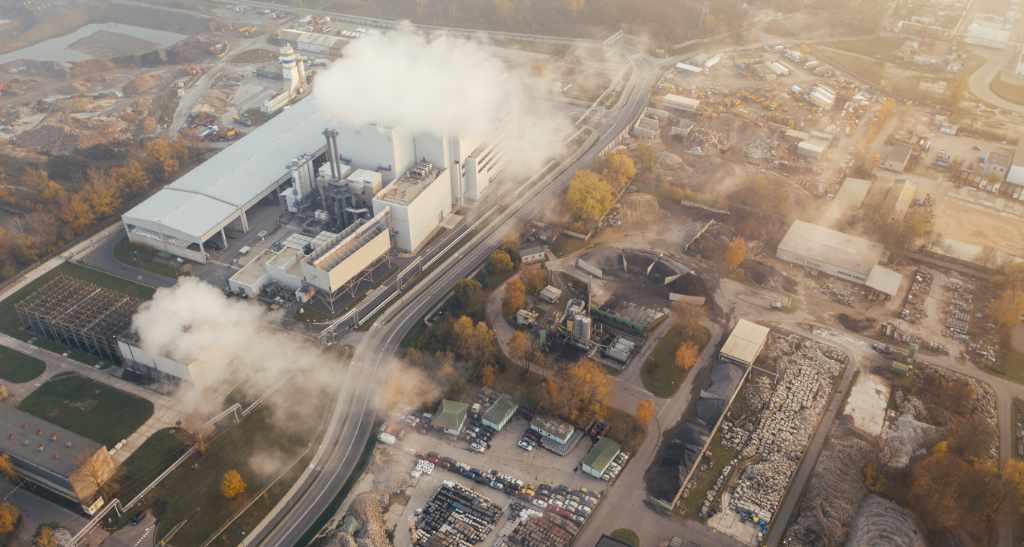We are delighted to be the Paint Partner of the Eye of the Collector exhibition. Here we interview its founder, Nazy Vassegh, who offers her vision and experiences that shaped this event.

CO2e – Q&A with Malin Cunningham of Hattrick
Introduction:
Meet Malin Cunningham, the visionary force behind Hattrick, a thriving UK-based B2B content marketing agency with a compelling emphasis on bolstering businesses in the realm of sustainability.
Beyond her role as the founder and Managing Director, Malin is a fervent advocate for sustainability and a vocal proponent of positive climate change. Her passion permeates the very essence of her business, which has recently earned the prestigious distinction of being a certified B Corp. In addition, Malin’s commitment to sustainability shines through the accredited Net Zero Masterclass seminars that Hattrick offers to sales and marketing teams worldwide.
Who better to explain a little more about CO2e, and why it matters – this month Malin is our Guest Editor, and we have asked her to answer the most commonly asked questions and share her tips for reducing emissions.

1. What is CO2e, and how does it differ from regular CO2?
When we talk about the causes of climate change, most people probably think about fossil fuels and carbon dioxide. However, there are a number of gases that contribute towards global warming. To make it easier to talk about emissions, each so-called ‘greenhouse gas’ has been converted into a standard unit; CO2e – or ‘carbon dioxide equivalent’.
The gases include methane, nitrous oxide, chlorofluorocarbons, ozone and carbon dioxide and they all have different heating potential. The CO2e unit converts the impact of each gas to the equivalent warming amount of CO2. That way, a carbon footprint consisting of lots of different greenhouse gases can be expressed as a single number.
To understand which gases are the most prominent, check out Our World in Data.
2. How does CO2e contribute to global warming, and what are its effects on the planet’s climate?
The greenhouse gases are all a natural part of the atmosphere and play an essential part in keeping our planet warm – hence the collective name.
However, since the industrial revolution humans have added surplus gases to the atmosphere creating an ever thicker ‘blanket’ around the planet making the world increasingly hotter. For a simple overview and explanation, this TED-ed clip is a great watch.
These warmer temperatures are changing weather patterns across the world and are driving more frequent and extreme events including storms, flooding, droughts and wildfires. The world has already warmed by at least 1.1 degrees centigrade[1] with devastating impact.
3. What are the main sources of CO2e emissions, and how do they impact the environment?
Carbon dioxide (CO2), methane and nitrous oxide are the most troublesome greenhouse gases. Coal, oil, and natural gas are the greatest contributors as they produce CO2 when they’re burned to generate electricity, power transportation or provide heat.
And perhaps the most commonly known cause of methane gas is that from livestock. However, the largest contributors are actually oil and gas extraction, coal mining, and waste landfills.
Finally, one of the key sources of nitrous oxide emissions is fertilisers used in farming as not all the ‘feed’ used is absorbed by the plants.
These emissions all contribute to global warming, and if they continue to rise, we could be faced with extreme weather conditions like wildfires, droughts, and heat waves. This makes it increasingly difficult for plants and animals to survive, and without them, sustaining life on Earth becomes impossible.

4. How does CO2e affect human health, and what are the potential risks associated with its increase in the atmosphere?
As rising CO2e levels continue to wreak havoc with our climate, many people are having to deal with intolerable and life-threatening weather events.
But, it’s just as important to highlight the impact on mental health, with a recent survey revealing that climate anxiety and depression are plaguing the younger generation especially.
However, it’s not all about ‘climate change’. In the UK, CO2 for one is listed as a ‘substance hazardous to health’. As air quality continues to plummet, and exposure to CO2 is increased, we could face various respiratory and cardiovascular problems.
5. Can you explain the concept of the “carbon footprint” and how individuals and businesses can reduce their CO2e emissions?
A carbon footprint is the total amount of greenhouse gases emitted by, for instance, an individual, organisation or country. It helps us measure the impact we’re having on global warming and is generally reported in tonnes, kilograms, or grams.
Luckily, there are plenty of ways to reduce your carbon footprint – both at home and at work – including using public transport or cycling instead of driving, opting for a meat-free diet or insulating your home.
Businesses have a huge role in the fight against climate change by committing to ‘Net Zero’ and putting detailed plans in place for how they are going to get there.
If you want to know what your footprint is and get personalised tips on how to reduce it, visit Giki. The platform also has great tools for businesses.
6. What are some surprising everyday activities or products that contribute to CO2e emissions, and how can we reduce our reliance on them?
Technology and ‘digital’ is omnipresent, but many people underestimate their digital carbon footprint. However, there are some relatively easy changes that you make to have a big impact:
- According to OVO energy, if everyone in the UK sent one less “thank you” email a day, we could save 16,500 tonnes of carbon annually.
- The average carbon footprint in Europe per hour of video streaming is revealed to be approximately 55gCO2e. The solution? Switch to standard definition over high definition, and turn off autoplay.
- The average website can contribute as much as 4,700 pounds of CO2 emissions annually. So, optimise and strip back on data-heavy graphics where possible, alongside switching to green hosting.
7. What is the role of carbon offsets in mitigating CO2e emissions, and how do they work?
Carbon offsetting schemes have emerged as a way for individuals and businesses to ‘balance out’ their footprint and the impact on the planet. This is usually done by investing in projects through a third party that either reduce or store carbon, such as tree planting and forest preservation.
However, research has shown that these ‘credits’ are useless and a distraction as they can make us feel like we’re eliminating emissions and getting us off the hook. Of course, it’s very important to protect forests and plant more trees, but the primary focus should be on reducing our emissions and not using credits to cancel them out.

8. Are there natural processes that help remove CO2e from the atmosphere, and how can we support these processes to combat climate change?
Forests are among the most prominent natural so-called ‘carbon sinks’, that absorb CO2e through photosynthesis. However, unfortunately, deforestation is a real issue worldwide, so it’s crucial to protect existing forests and invest in reforestation to tackle the climate crisis.
Equally, oceans absorb and store carbon dioxide in the deep sea, stripping the atmosphere of destructive greenhouse gases. Polar ice caps also help to keep the planet cool by reflecting heat from the sun (rather than removing greenhouse gases), but unfortunately, we’re losing Arctic sea ice at a rate of almost 13% per decade making climate change worse.
9. What are some global efforts and agreements aimed at addressing CO2e emissions, and how effective have they been in curbing its rise?
The most comprehensive programme to tackle climate change is the Paris Agreement that was signed in 2015. This is a legally binding deal to limit global warming to ‘well below’ 2°C that was adopted by 196 parties across the world at the UN Climate Change Conference (COP21).
However, despite the promising rhetoric, greenhouse gas emissions are still rising. The world is expected to exceed the 1.5°C mark by 2035 – and warm to 2.5°C by 2100 – according to the UN Framework Convention on Climate Change report in September 2023.
10. What steps can governments, industries, and individuals take to collectively reduce CO2e levels and work towards a more sustainable future?
Real change comes from collaboration and different forces driving in the same direction. The issues we’re facing can feel overwhelming, however, we only need 20% of people to work towards the same goal to trigger a social tipping point.
One of the most important steps in making that happen is education. Helping individuals, organisations, and businesses understand the opportunities and threats that climate change presents. That, in tandem with tougher regulations and legislation, will bring about the necessary shift that’s needed to drive down emissions.
Get clued up & confident about climate change
There’s a lot to climate change from understanding the science and why it matters to getting to grips with the terminology, greenwashing and the type of actions we can take to tackle the challenges.
To make more sense of it all, take a look at Hattrick’s accredited masterclass for teams in the built environment. Or contact Malin by email.







This Post Has 0 Comments